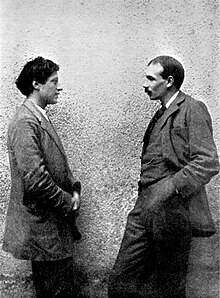
Adeline Virginia Woolf was an English writer. She is considered one of the most important modernist 20th-century authors. She pioneered the use of stream of consciousness as a narrative device.

The Bloomsbury Group was a group of associated British writers, intellectuals, philosophers and artists in the early 20th century. Among the people involved in the group were Virginia Woolf, John Maynard Keynes, E. M. Forster, Vanessa Bell, and Lytton Strachey. Their works and outlook deeply influenced literature, aesthetics, criticism, and economics, as well as modern attitudes towards feminism, pacifism, and sexuality.
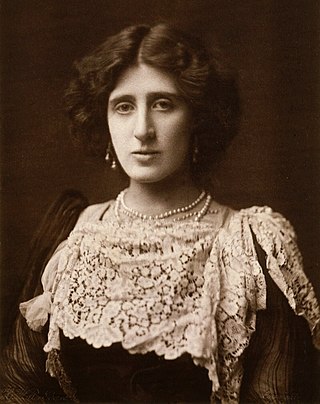
Lady Ottoline Violet Anne Morrell was an English aristocrat and society hostess. Her patronage was influential in artistic and intellectual circles, where she befriended writers including Aldous Huxley, Siegfried Sassoon, T. S. Eliot and D. H. Lawrence, and artists including Mark Gertler, Dora Carrington and Gilbert Spencer.
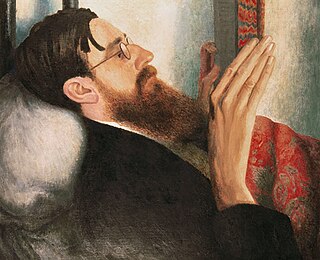
Giles Lytton Strachey was an English writer and critic. A founding member of the Bloomsbury Group and author of Eminent Victorians, he established a new form of biography in which psychological insight and sympathy are combined with irreverence and wit. His biography Queen Victoria (1921) was awarded the James Tait Black Memorial Prize.

Duncan James Corrowr Grant was a Scottish painter and designer of textiles, pottery, theatre sets, and costumes. He was a member of the Bloomsbury Group.
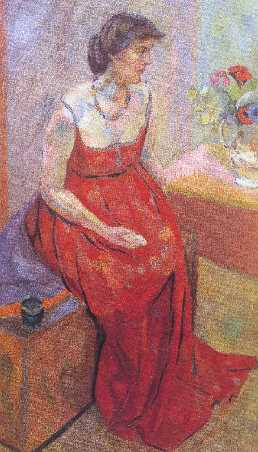
Vanessa Bell was an English painter and interior designer, a member of the Bloomsbury Group and the sister of Virginia Woolf.
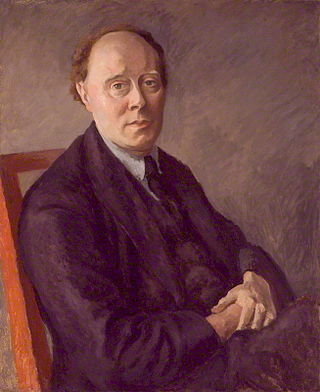
Arthur Clive Heward Bell was an English art critic, associated with formalism and the Bloomsbury Group. He developed the art theory known as significant form.

Garsington Manor, in the village of Garsington, near Oxford, England, is a country house, dating from the 17th century. Its fame derives principally from its owner in the early 20th century, the "legendary Ottoline Morrell, who held court from 1915 to 1924".

Dora de Houghton Carrington, known generally as Carrington, was an English painter and decorative artist, remembered in part for her association with members of the Bloomsbury Group, especially the writer Lytton Strachey. From her time as an art student, she was known simply by her surname as she considered Dora to be "vulgar and sentimental". She was not well known as a painter during her lifetime, as she rarely exhibited and did not sign her work. She worked for a while at the Omega Workshops, and for the Hogarth Press, designing woodcuts.

Charleston, in East Sussex, is a property associated with the Bloomsbury group, that is open to the public. It was the country home of Vanessa Bell and Duncan Grant and is an example of their decorative style within a domestic context, representing the fruition of more than sixty years of artistic creativity. In addition to the house and artists' garden, Charleston hosts a year-round programme of Bloomsbury and contemporary exhibitions in a suite of galleries designed by Jamie Fobert Architects which opened in September 2018. Two restored barns are home to The Threshing Barn café and The Hay Barn where events and workshops are held throughout the year. The Outer Studio at Charleston hosts a permanent display of Bell and Grant's Famous Women Dinner Service, and there is also a shop selling Bloomsbury-inspired art, homeware fabrics, fashion, books and stationery.

Mark Gertler was a British painter of figure subjects, portraits and still-life.

Angelica Vanessa Garnett, was a British writer, painter and artist. She was the author of the memoir Deceived with Kindness (1984), an account of her experience growing up at the heart of the Bloomsbury Group.
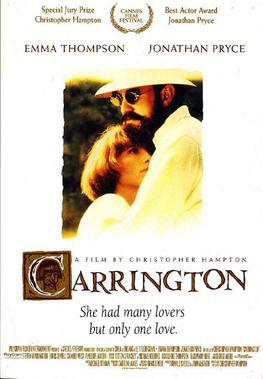
Carrington is a 1995 British biographical film written and directed by Christopher Hampton about the life of the English painter Dora Carrington (1893–1932), who was known simply as "Carrington". The screenplay is based on Lytton Strachey: A Critical Biography, the 1967-68 two-volume biography of writer and critic Lytton Strachey (1880–1932) by Michael Holroyd.

Monk's House is a 16th-century weatherboarded cottage in the village of Rodmell, three miles (4.8 km) south of Lewes, East Sussex, England. The writer Virginia Woolf and her husband, the political activist, journalist and editor Leonard Woolf, bought the house by auction at the White Hart Hotel, Lewes, on 1 July 1919 for 700 pounds, and received there many visitors connected to the Bloomsbury Group, including T. S. Eliot, E. M. Forster, Roger Fry and Lytton Strachey. The purchase is described in detail in her Diary, vol. 1, pp. 286–8.

Frances Catherine Partridge CBE was an English writer. Closely connected to the Bloomsbury Group, she is probably best known for the publication of her diaries. She married Ralph Partridge in 1933. The couple had one son, (Lytton) Burgo Partridge (1935–1963).
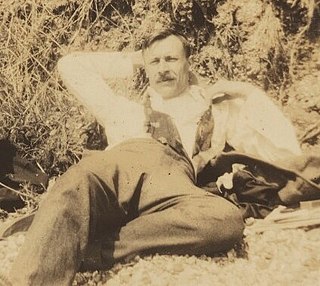
Saxon Arnoll Sydney-Turner was a member of the Bloomsbury Group who worked as a British civil servant throughout his life.
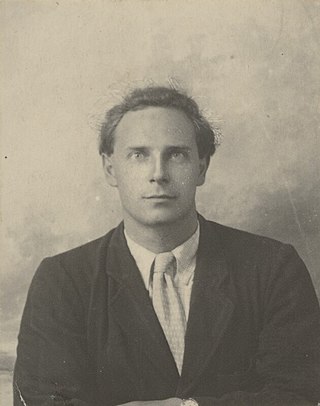
Reginald Sherring Partridge,, generally known as Ralph Partridge, was a member of the Bloomsbury Group. He worked for Leonard Woolf and Virginia Woolf, married Dora Carrington and then Frances Marshall, and was the unrequited love of Lytton Strachey.
Gloomsbury was a BBC Radio 4 comedy sitcom which gently parodied the lives, loves and works of the Bloomsbury Group. It was written by Sue Limb and five series were produced, in 2012, 2014, 2015, 2017 and 2018.
The Bloomsbury Group plays a prominent role in the LGBT history of its day.
Life in Squares is a British television mini-series that was broadcast on BBC Two from 27 July to 10 August 2015. The title comes from Dorothy Parker's witticism that the Bloomsbury Group, whose lives it portrays, had "lived in squares, painted in circles and loved in triangles".
